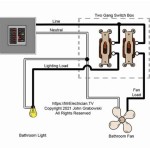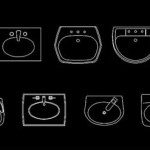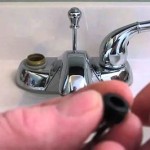Old Bathroom Sink Drain Pipe Size
Understanding the size of old bathroom sink drain pipes is crucial for renovations and repairs. Incorrect sizing can lead to leaks, clogs, and other plumbing issues. This article explores common drain pipe sizes found in older homes, helping homeowners and professionals make informed decisions during plumbing projects.
Key Points
- Drain pipe size impacts drainage efficiency.
- Older homes often have different pipe sizes than modern builds.
- Knowing the correct size is essential for purchasing replacement parts.
For much of the 20th century, the standard drain pipe size for bathroom sinks was 1 1/4 inches in diameter. This measurement refers to the inside diameter of the pipe. While 1 1/2-inch drain pipes are increasingly common in new construction, many older homes still retain the original 1 1/4-inch piping.
Key Points
- 1 1/4-inch drain pipes were the standard in older homes.
- Modern homes typically use 1 1/2-inch drain pipes.
- Measuring the inside diameter is crucial for accurate sizing.
Determining the exact size of an existing drain pipe can be done in several ways. One straightforward method involves measuring the outside diameter of the pipe with a tape measure and then subtracting the pipe wall thickness. Alternatively, plumbers often use specialized tools like calipers to directly measure the inside diameter.
Key Points
- Measuring the outside diameter and subtracting wall thickness can determine the inside diameter.
- Calipers offer a precise measurement of the inside diameter.
Another method is to remove the P-trap, the curved section of pipe located beneath the sink. The inside diameter of the P-trap's connecting ends typically matches the size of the drain pipe. Examining the markings on the P-trap itself might also reveal the pipe size. However, it's important to note that if the plumbing has been modified in the past, the P-trap size may not reflect the original drain pipe size.
Key Points
- The P-trap's connecting ends usually match the drain pipe size.
- Markings on the P-trap might indicate the pipe size.
- Past plumbing modifications can affect the accuracy of using the P-trap for size determination.
Variations in drain pipe size existed even in older homes. Larger sinks or those located further from the main drain line might have utilized 1 1/2-inch drain pipes. Additionally, some older homes might have employed non-standard sizes due to regional variations or the use of now-obsolete plumbing materials.
Key Points
- Larger or more distant sinks in older homes might have used 1 1/2-inch pipes.
- Regional variations and obsolete materials could result in non-standard sizes.
Understanding the implications of drain pipe size is important for proper drainage. While 1 1/4-inch pipes were sufficient for earlier fixtures with lower flow rates, modern sinks and faucets often have higher flow rates. Using a smaller drain pipe with a high-flow fixture can lead to slow drainage or even backups. This is why upgrading to a 1 1/2-inch drain pipe is often recommended when replacing older fixtures.
Key Points
- 1 1/4-inch pipes might be inadequate for modern high-flow fixtures.
- Upgrading to 1 1/2-inch pipes can improve drainage with modern fixtures.
When undertaking plumbing renovations in an older home, accurate identification of drain pipe size is essential for purchasing the correct replacement parts. Attempting to connect different sized pipes requires adapters, which can introduce potential leak points. Using properly sized components ensures a secure and efficient drainage system.
Key Points
- Accurate sizing ensures the purchase of correct replacement parts.
- Using adapters to connect different sized pipes increases the risk of leaks.
- Properly sized components contribute to a secure and efficient drainage system.
Consulting a qualified plumber is advisable when dealing with older plumbing systems. They can accurately assess the existing pipe size and recommend appropriate solutions for any drainage issues or renovations. A professional plumber possesses the expertise and tools to handle complex plumbing situations effectively.
Key Points
- Consulting a plumber is recommended for older plumbing systems.
- Plumbers can accurately assess pipe size and recommend solutions.
- Professional plumbers have the expertise to handle complex plumbing situations.
What Size Pipe Do You Use For A Sink Drain Quora
What Plumbing Piece Is Normally Used To Transition From 1 4 Bathroom Sink 2 Drain Pipe Quora
How To Install Bathroom Sink Drain Queen Bee Of Honey Dos

Snappytrap Universal Drain Kit For Bathroom Sinks Dk 105 The Home Depot
Fixing Old 1920 S Sink Drain Pipe Diy Home Improvement Forum

What Is The Standard Size For Drain Hole In A Bathroom Sink Hunker

Trap Adapters Simply Connect Your To Drain Pipe

Simple Drain 1 25 In Rubber Threaded P Trap Bathroom Single Sink Kit 3ea 1v2 Tc0 The Home Depot

Bathroom Sink Drain Leak Not Sure How To Fix Doityourself Com Community Forums

1950s Bathroom Plumbing Replacing Sink Doityourself Com Community Forums
Related Posts







